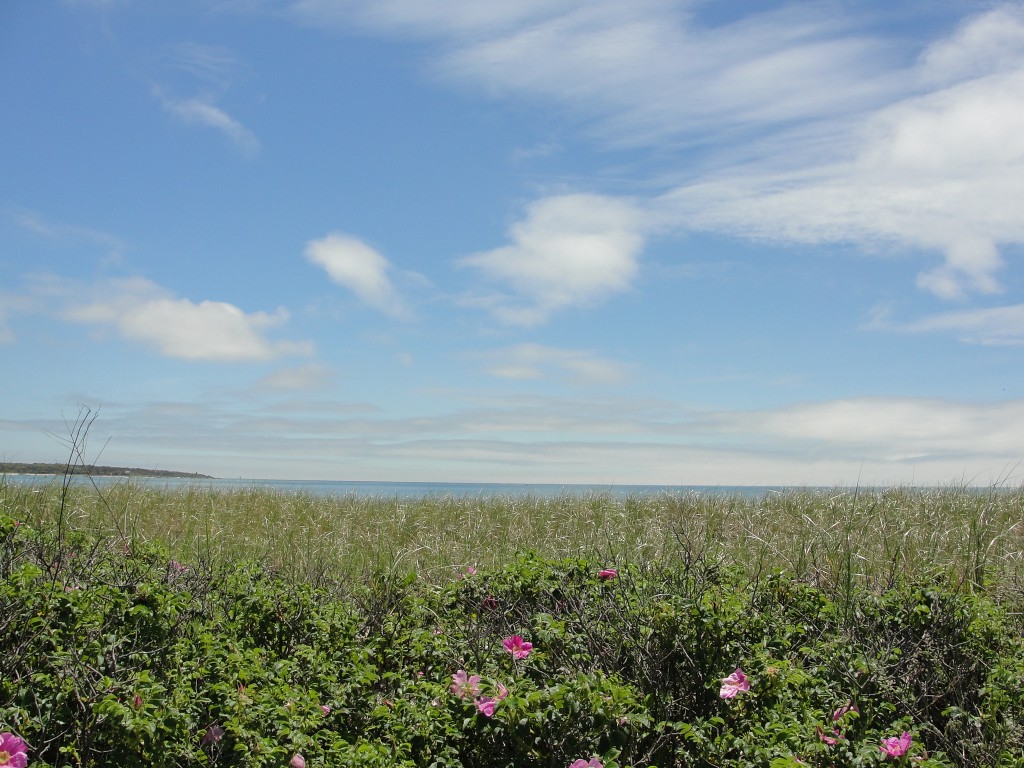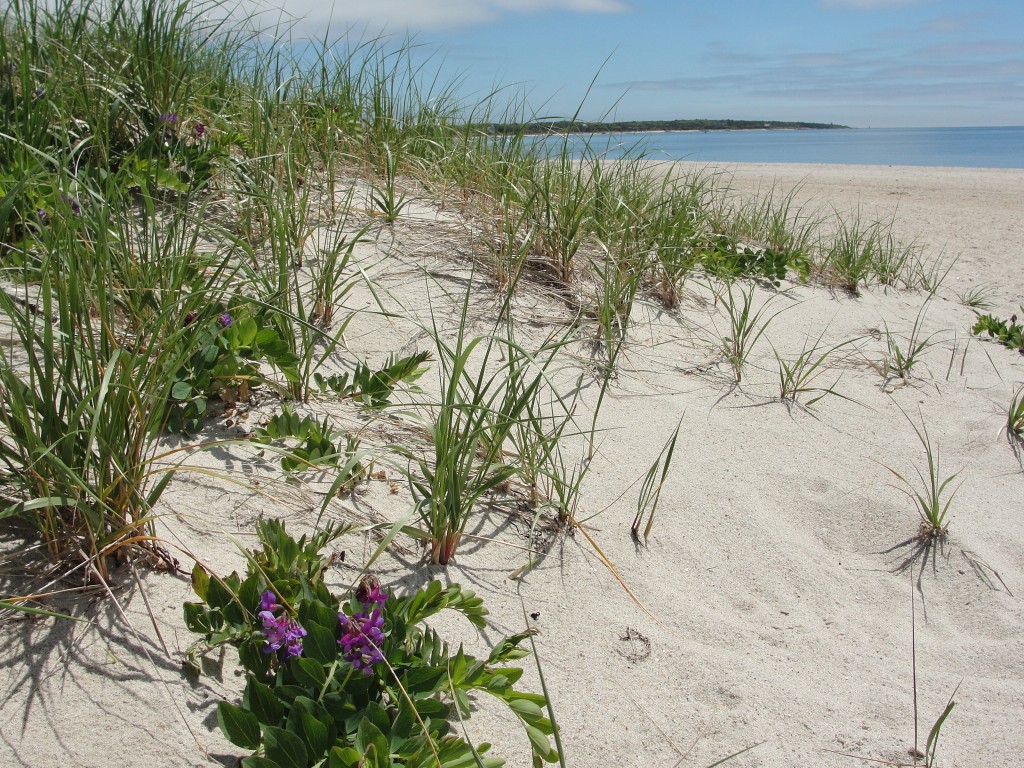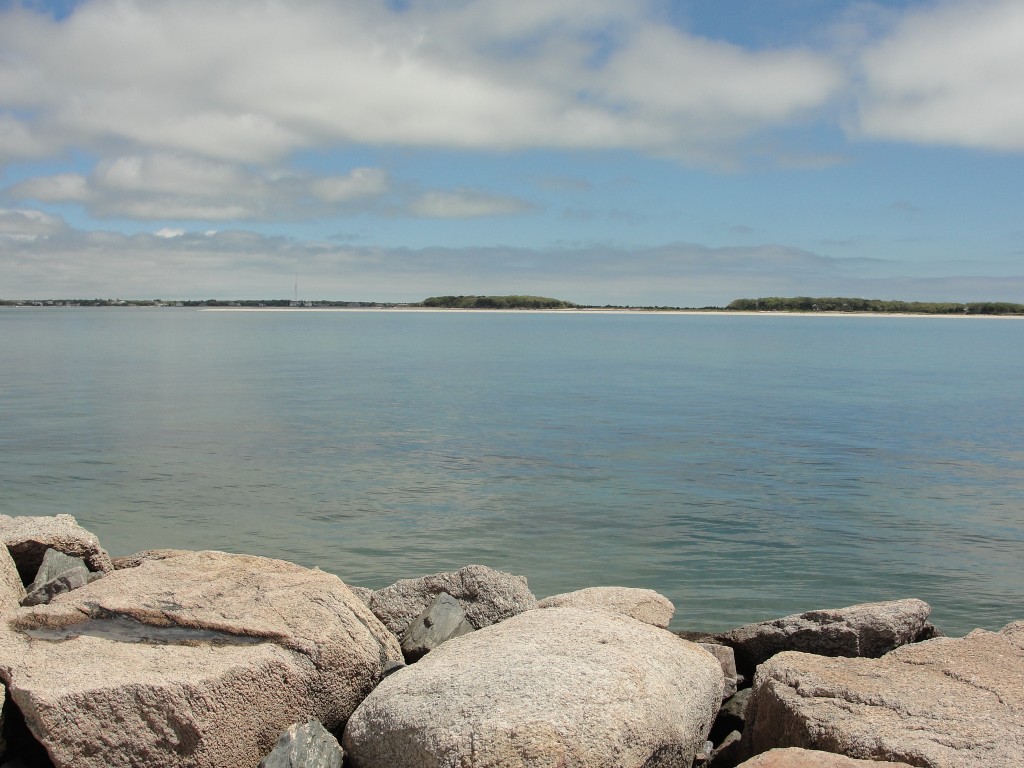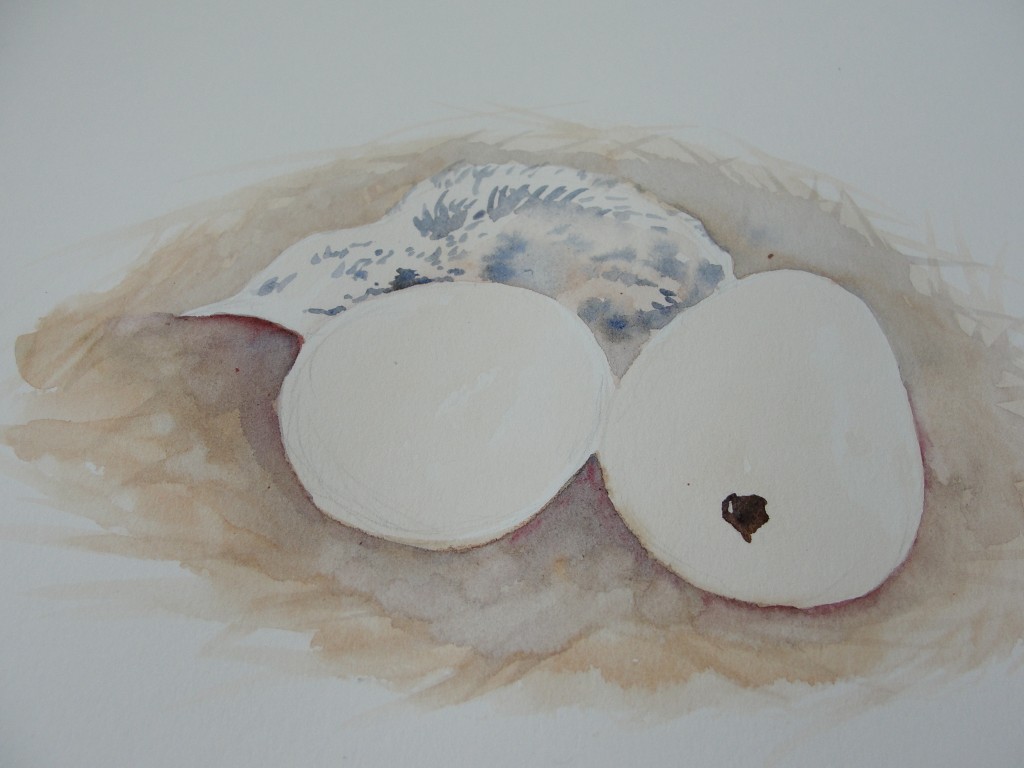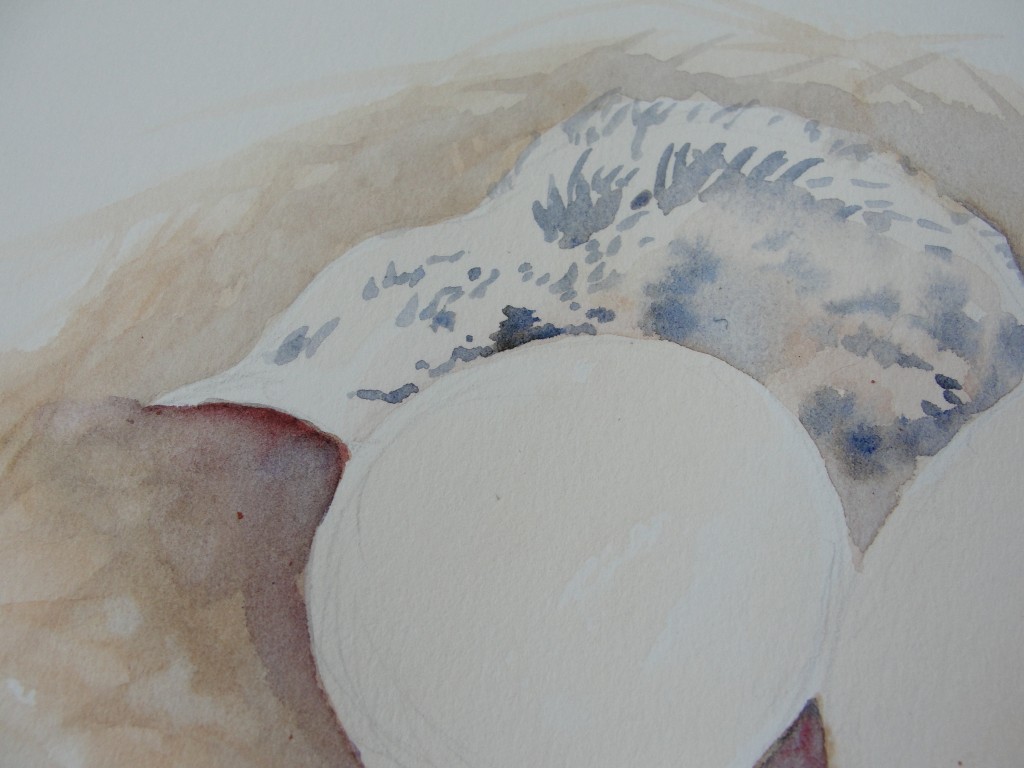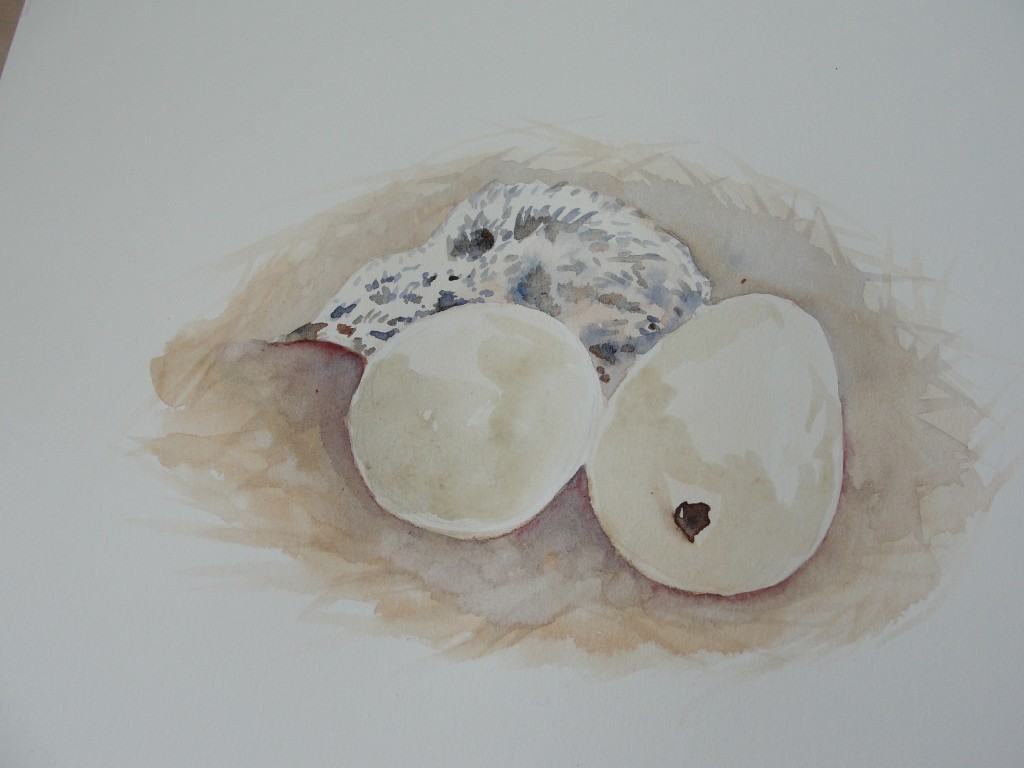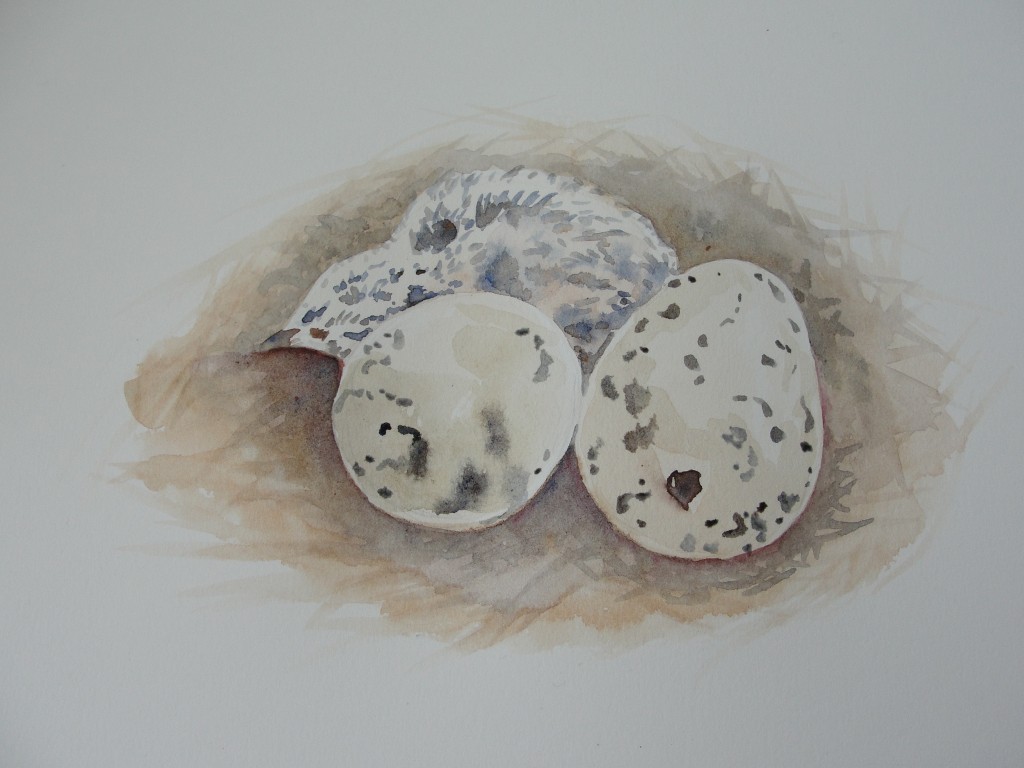It’s June and that means the dunes are in bloom on Cape Cod. Don’t wait too long to get out there and enjoy the colors and scents of the dune flowers, though, because their splendor is short lived.
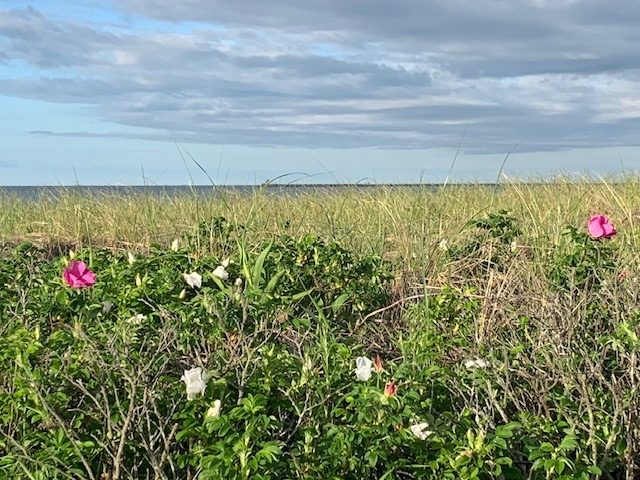
Beach roses, correctly known as rosa rugosa, are not local to the Cape and Islands but are so common here that they are used on promotional materials for many summer programs. Brought here by sea captains from Asia back in the 1800s, they have adapted and proliferated here. Some stories say they were brought back as a romantic gift for a sea captain’s wife. Less romantic stories say seeds floated over in bilge water. I say, take your pick.
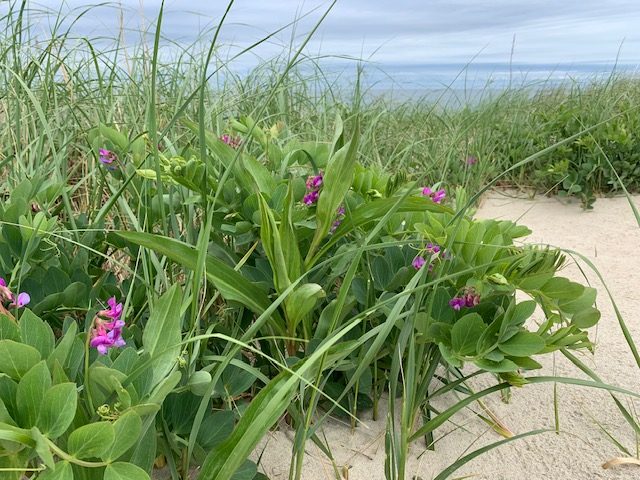
Beach peas are very common at almost all Cape beaches and dune areas. They are low growing and sprawl across the sand with pink and purple blossoms. They really do grow pea pods and although some people say they are not edible, others insist they are delicious. They are usually full of bugs, so I usually leave them to the wildlife to consume. Wild rabbits and even red foxes gobble them up and birds peck apart the pods in late summer to eat the dried peas.

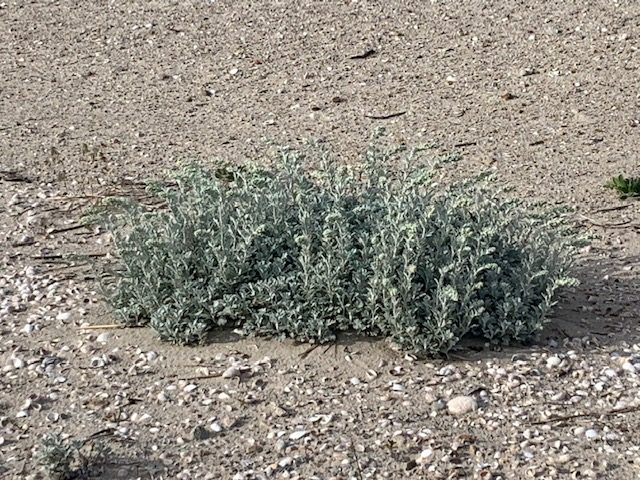
Dusty miller grows in the hottest, driest places on the beach and in the dunes. It will have stalks of yellow flowers by the end of this month and seems to be pretty drought resistent. It perseveres even through the driest, hottest summers.
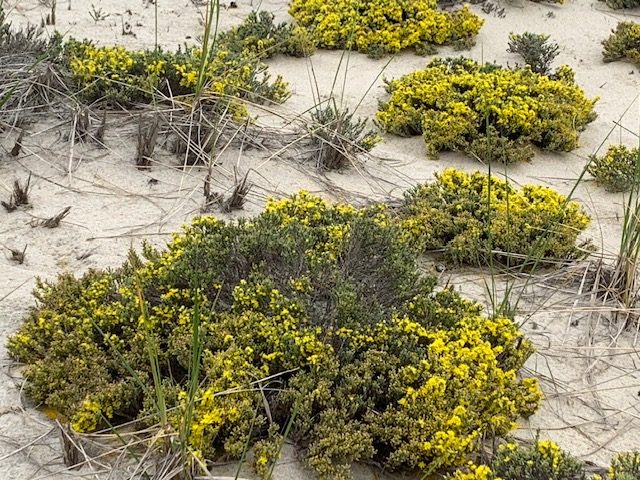
For me, one of the most amazing sights of the year is the hudsonia in bloom in the dunes in June. This low to the ground yellow flower is tough as nails and as beautiful a carpet of flowers as you’ll ever find on the Cape. It’s bloom doesn’t last long so get out there now to enjoy it.
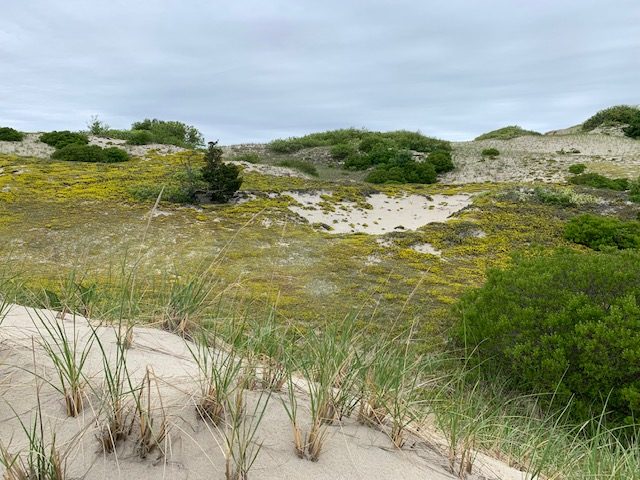
There is also a type of locust in bloom right now, one with pink blossoms.
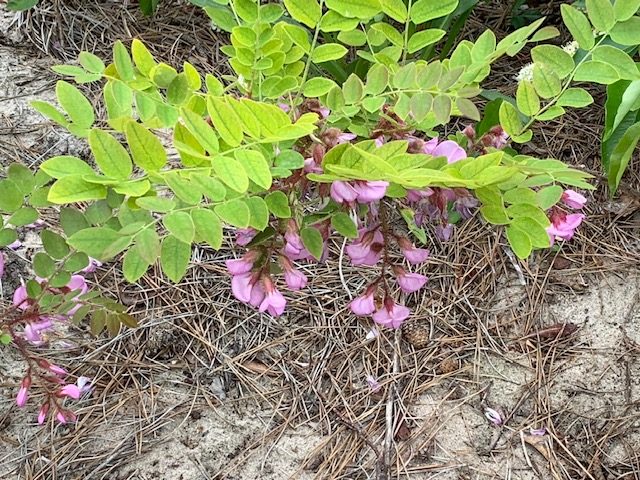
You may also be seeing clusters of leaves with maroon bottoms–these are the beginnings of seaside goldenrod plants. They won’t bloom until late summer or early fall but for now their foliage is beautiful.
Dune and beach plants have to be very tough, drought tolerant, and adaptive to constantly changing weather conditions. Many are prickly or thick. Some feel furry. These are all ways plants protect themselves. Most have deep roots, which not only help them find moisture, but which hold sand in place as well.
When you’re out walking this June, take a closer look at the plants you see. These guys have earned our appreciation and respect. Without them, our beaches and dunes would not only look different but could be severely compromised by waves and wind that move sand around with abandon.
The roses get a lot of attention but trust me, the hudsonia can give them a run for their money. Get out there and enjoy them while you can.

